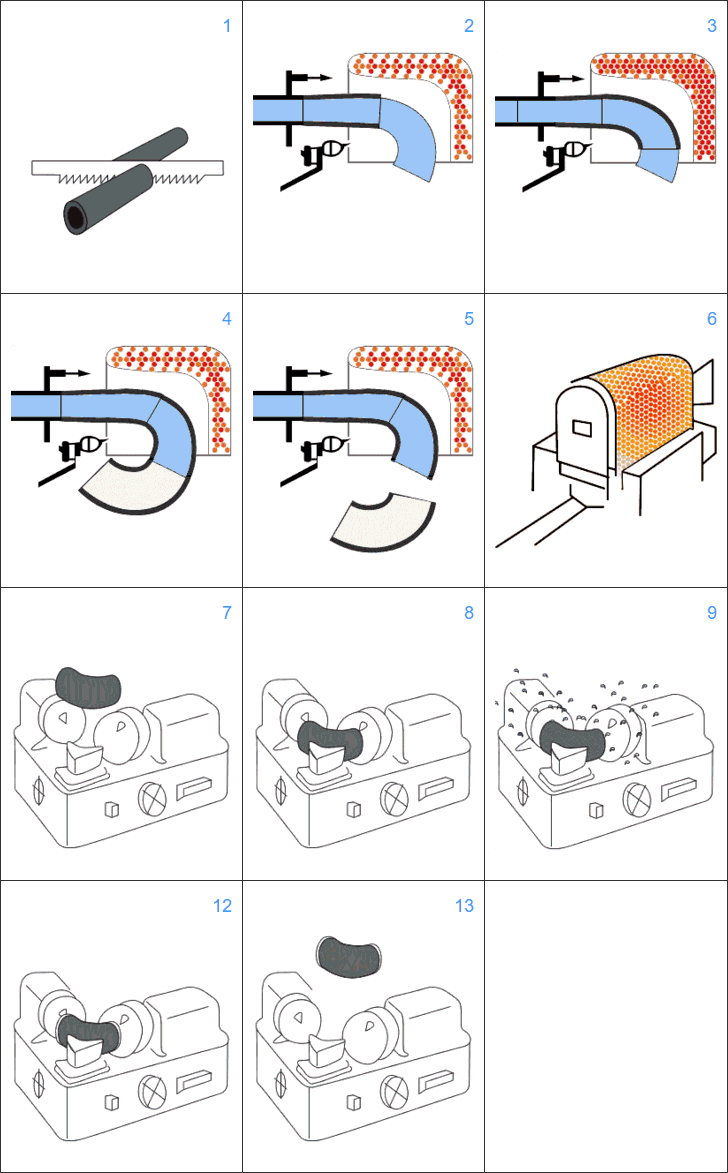Production process of elbow: hot forming
- Wilson Pipeline
- Jan 5, 2022
- 2 min read
Introduction to Hot Forming
Hot bend forming process is using special elbow push processing machine, mold and a heating device, so that the set of billet in the mold on the forward movement in the push for machine, process in motion is heated, expansion and bending. Deformation characteristics of hot pushed elbow is according to the law of metal materials of constant volume before and after deformation of tube diameter, the tube diameter is smaller than the diameter of the elbow, the deformation process of core control blank, the metal flow in arc compressed, compensation for expanding and reducing other parts of thin, thereby get the thickness uniformity. Has the advantages of beautiful appearance, uniform wall thickness and continuous operation of hot bend forming process, is suitable for mass production, and thus become the main forming method of carbon steel, alloy steel elbow, forming and application in some specifications of stainless steel elbow. Heating forming process of induction or high-frequency heating (heating ring for multi ring or a single ring), flame heating and reflection furnace heating, the heating mode of forming product requirements and energy condition.
Production process of elbow: hot forming
One of the most common manufacturing methods for manufacturing elbows from pipes. After heating the raw material, it is pushed over a die called “mandrel” which allows the pipe to expand and bend simultaneously. Applicable to a wide size range.
Elbows of steel pipe joints are used in the industrial plants and are mainly manufactured by the hot mandrel bending from raw material of straight steel pipe. Elbows are generally manufactured at elevated temperature by means of pushing, expanding and bending of pipes simultaneously, using the inner tool of mandrel.
Characteristics of mandrel bending strongly depend on the integrated shape and dimensions of the mandrel.
Elbows manufactured by using hot mandrel bending have advantages of small thickness deviation and shorter bending radius than those of any other bending method type.


Comments